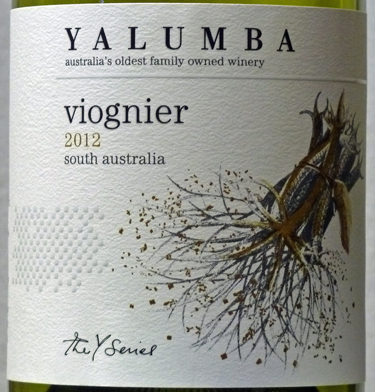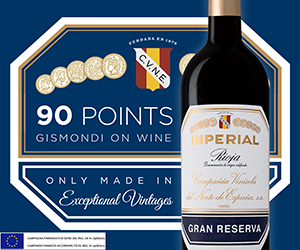It would be extremely naive to assume that every wine placed on a wine list is there because it deserves to be there.

It would be extremely naive to assume
that every wine placed on a wine list is there because it deserves to be there.
Quality and value are noble words but they often have precious little to do
with a wine's position on any wine list. In a recent study by the American
Association of Wine Economists the question they asked was: Do Restaurants
Cater to Locapours (people who drink local wines)? Using Zagat data they tried
to examine the factors that influence wine list selections.
There are many parallels between this
study and British Columbia, beginning with an increased in interest in local
foods among final consumers, in this case in New York state. Added to that
there has been a rise in offerings of local products in restaurants. They chose
local wine because it was easily identified and because it "is clearly labelled
on the menu and because there is a burgeoning wine industry in New York state."
Quoting myriad of studies the authors
suggest consumers are increasingly interested in purchasing local foods,
perceiving they have benefits to human health, the environment, and the
economies in local communities. I might add that tourists are likely the single
biggest factor affecting B.C. restaurant sales.
One stop in a wine country restaurant in
Italy, France, Chile or Australia will illustrate that clearly tourists want to
drink the local wines, and when you think about it, why wouldn't they? Nobody
is touring Tuscany hoping to drink a bottle of Napa Valley cabernet.
But the study in New York points to
other interesting factors. Using data for 1,401 restaurants, their econometric
results indicate, "That decor ratings, cuisine styles, certain wine list
characteristics and distance to wine regions have a statistically significant
impact on the likelihood of New York State restaurants serving local wine."
Overall, the results indicate that
restaurants' decisions to include local wines on their menus increased with
higher decor scores and cuisine that is categorized as New American.
Restaurants featuring natural/organic
foods pointed to higher counts of domestic wines especially white wines. The
presence of local wines decreased with the number of red wine offered on the
menu.
Eighteen pages into the report,
researchers summarized several important implications for wineries in New York
and other nascent wine production regions. They suggested decor is an
"indicator for ambience and attention to detail, and interpret this to be the
reason these restaurants are more likely to place local wines on their menu."
Cuisine type also appears to play a
large role in restaurants' decisions to include local wines on their menu.
Results suggest that restaurants with European or Asian cuisine styles in New
York state may be less receptive to local wines although that's likely less of
a factor in B.C.
Restaurants that include more white wine
in general, or more domestic wines overall, appear to be more likely to include
local wine on their menu. Also restaurants located in Long Island (the
predominant region of red wine production) are more likely to list local red
wines on their menu, yet restaurants located in other regions of the state did
not exhibit any preferences for New York reds. This suggests that the location
of restaurant matters, but that the "local" effect is quite focused
geographically and does not transcend across a large state like New York.
The report finishes with the suggestion
that "demand for local products by restaurant owners which represent a group of
intermediate consumers is often overlooked in the agricultural economics
literature, yet they are engaged in a substantial amount of food and beverage
purchases in the United States."
So now we know, with some rigour, that
restaurants matter to local wines. Hardly a revelation to us in B.C., but it an
excellent message for local producers that perhaps if you can make it there,
you can make it anywhere. It's up to you Okanagan ... Okanagan.
Chartron La Fleur Sauvignon Blanc 2011,
Bordeaux, France
Price: $15 | Score 86/100
UPC: 3263070031559
An introductory style Bordeaux Sauvignon
Blanc that is what it should be. Affordable, tasty, well-made and fun to drink,
especially with shellfish or even chicken salad. The nose is bright with fresh
grassy, mineral, floral, undertones a touch of ripe apple fruit.
Yalumba Y Series Viognier 2012, South
Australia
Price: $18
UPC: 9311789475974
The nose jumps from the glass with
ginger, crushed nectarine, orange peel and mango that all spills onto the
palate. The attack is full flavoured but refreshing intense mango, lime rind
marmalade and tropical flavours everywhere.
Jacob's Creek Moscato 2012, South
Eastern Australia
Price: $11 | Score 86/100
UPC: 9300727013187
It has an attractive floral, nectarine,
lime, minty, peach nose. The attack is fresh and juicy with a dash of spritz.
The palate is sweet with honey, green apple, nectarine, ginger and licorice
notes. At eight per cent alcohol you can sip this all night on the patio.
Santa Cristina Sangiovese Toscana 2011,
Tuscany, Italy
Price: $17 | Score 86/100
UPC: 08001935361404
Fresh, juicy, soft-style Tuscan red that
is predominately Sangiovese with some Merlot and Cabernet mixed in. The attack
is peppery with licorice, savoury, plum floral black olive fruit and a long
supple finish. A touch ripe for Tuscany, but that will add to its appeal.
Santa Rita Cabernet Sauvignon Reserva
2010, Valle del Maipo, Region del Valle Central, Chile
Price: $15 | Score 87/100
UPC: 089419007152
Open rich sappy, cassis/menthol/bay leaf
with earthy, chocolate aromas. The attack is dry and fresh and the tannins
light with black currant, tobacco, dill, cedar, coffee smoky notes.
Josef Chromy Pinot Noir 2011, Tasmania,
South Australia
Price: $30 | Score 89/100
UPC: 9339091001865
Tasmanian Pinot is cool -- carrot top,
celery salt, spicy and strawberry jam. The attack is dry, fresh and smooth on
the palate with strawberry, licorice, savoury, celery salt, tobacco and coffee
flavours. Food friendly and made with restraint.

 quicksearch
quicksearch





